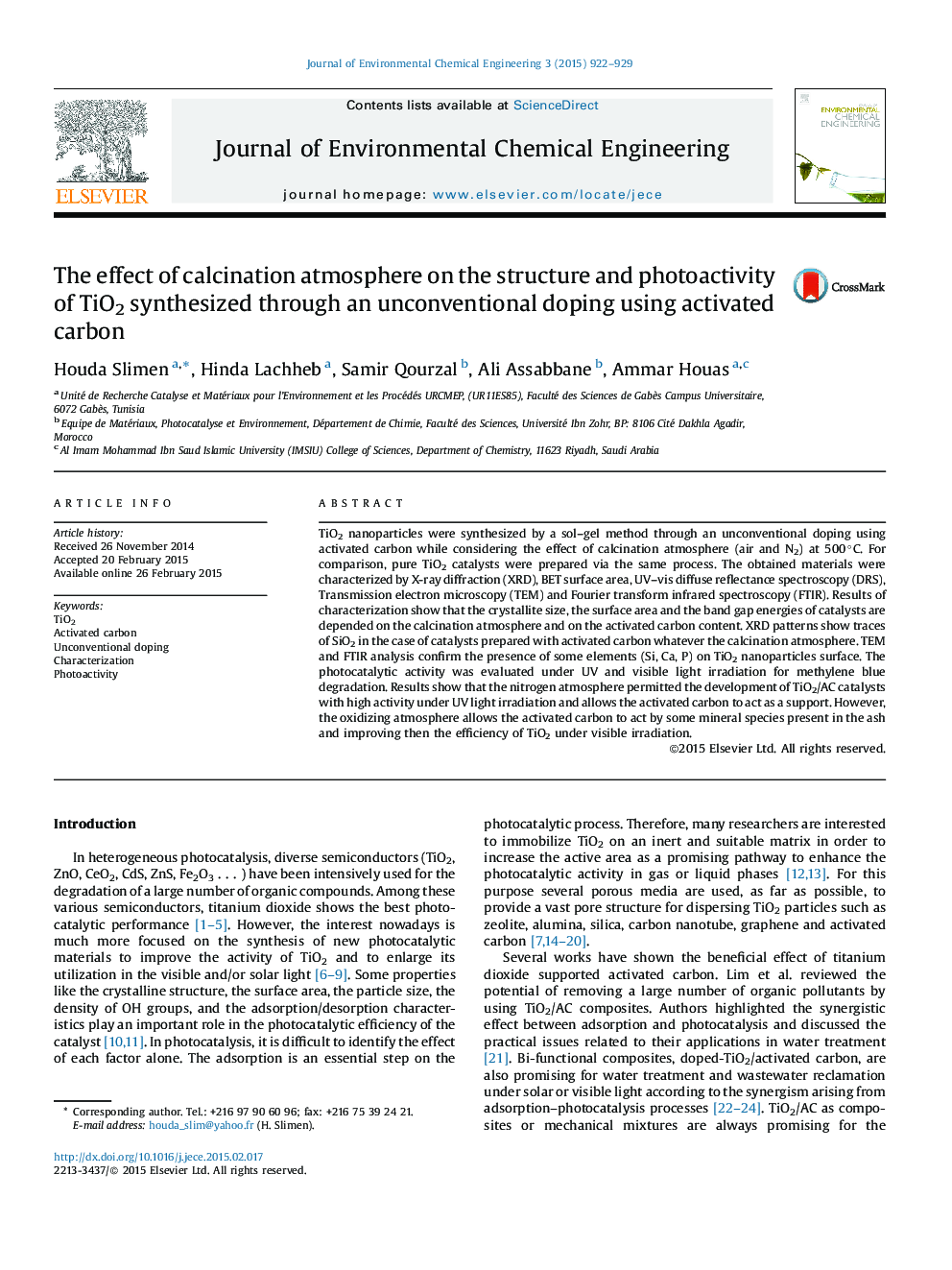| کد مقاله | کد نشریه | سال انتشار | مقاله انگلیسی | نسخه تمام متن |
|---|---|---|---|---|
| 222316 | 464274 | 2015 | 8 صفحه PDF | دانلود رایگان |

• A novel purpose for the enhancement of the photoactivity of TiO2 was reported.
• An unconventional doping of TiO2 through AC leading to a high active photocatalyst.
• The calcination atmosphere can predetermine the role of the activated carbon.
TiO2 nanoparticles were synthesized by a sol–gel method through an unconventional doping using activated carbon while considering the effect of calcination atmosphere (air and N2) at 500 °C. For comparison, pure TiO2 catalysts were prepared via the same process. The obtained materials were characterized by X-ray diffraction (XRD), BET surface area, UV–vis diffuse reflectance spectroscopy (DRS), Transmission electron microscopy (TEM) and Fourier transform infrared spectroscopy (FTIR). Results of characterization show that the crystallite size, the surface area and the band gap energies of catalysts are depended on the calcination atmosphere and on the activated carbon content. XRD patterns show traces of SiO2 in the case of catalysts prepared with activated carbon whatever the calcination atmosphere. TEM and FTIR analysis confirm the presence of some elements (Si, Ca, P) on TiO2 nanoparticles surface. The photocatalytic activity was evaluated under UV and visible light irradiation for methylene blue degradation. Results show that the nitrogen atmosphere permitted the development of TiO2/AC catalysts with high activity under UV light irradiation and allows the activated carbon to act as a support. However, the oxidizing atmosphere allows the activated carbon to act by some mineral species present in the ash and improving then the efficiency of TiO2 under visible irradiation.
Journal: Journal of Environmental Chemical Engineering - Volume 3, Issue 2, June 2015, Pages 922–929